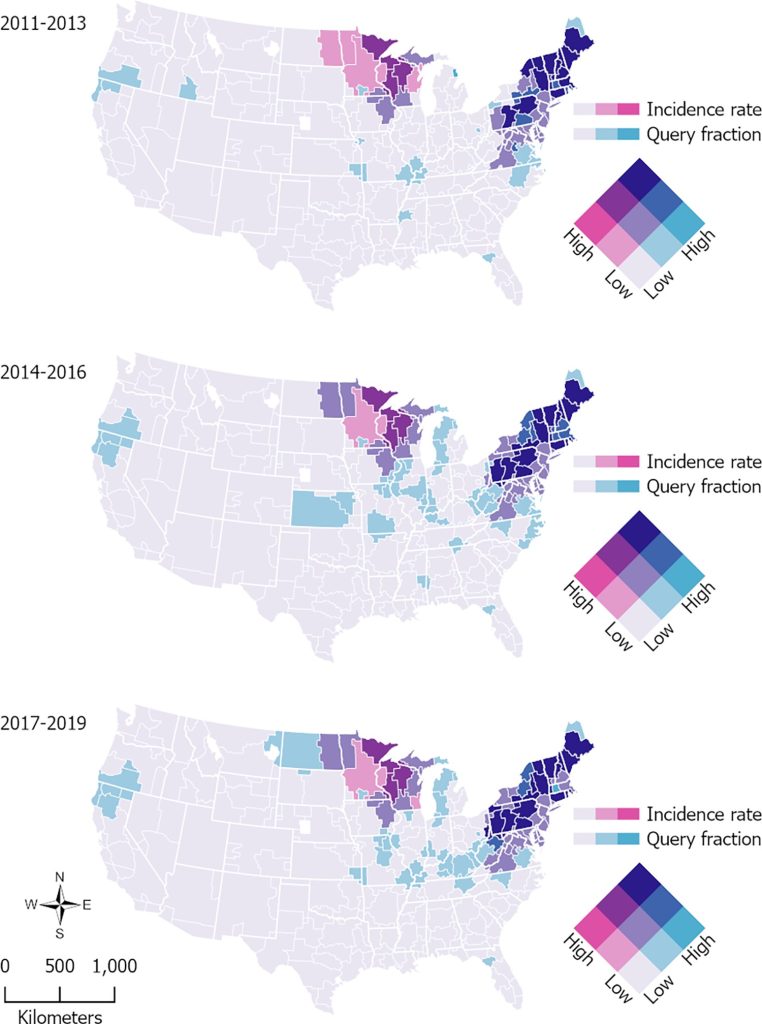
Have you ever been told by a doctor, “We don’t have Lyme disease here,” only to later learn that it is present but not being recognized?
Lyme disease is spreading geographically across the United States, and there are close to 500,000 new cases annually. Traditional surveillance methods underreport cases by a factor of 8-10x and often lag years behind the actual geographic expansion of the disease.
To address this gap, our Center’s research team, in collaboration with the Johns Hopkins Bloomberg School of Public Health, turned to an innovative tool: Google search data. By analyzing where people are searching for information about Lyme disease, we identified emerging hotspots and regions where the disease is underreported. This method proved to be faster and more effective than traditional reporting systems in pinpointing areas of risk.
Our findings revealed:
- Underreported areas, such as southern Oregon and northern California
- Regions where Lyme is spreading, including Western Pennsylvania, Ohio, Michigan, Illinois, and Iowa
- New hotspots: North Carolina and Kentucky
- Non-rural areas, including urban settings
Using Google search trends can help both doctors and the public better understand where Lyme disease poses a risk, especially in places where it is new or not well-recognized.
These insights highlight the urgent need for improved surveillance systems, public health measures, and education to increase public awareness to address the growing threat of tick-borne disease.


